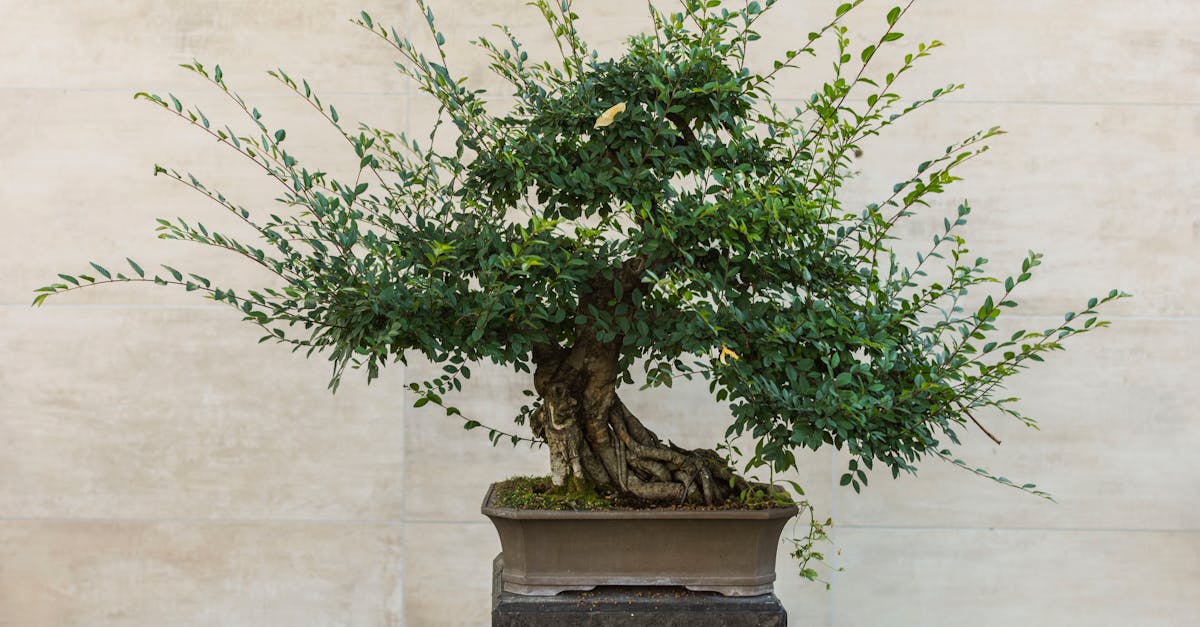Master of Miniature Masterpieces: Exploring the Bonsai Art of Sergio Biagi
Sergio Biagi: The Art of Bonsai in the Heart of Italy
Embark on a journey into the world of Sergio Biagi, a renowned bonsai master whose creations are a testament to his deep understanding of nature and artistic vision. From his captivating origins to his unique style, Biagi’s bonsai evoke a profound appreciation for the beauty and harmony of the natural world.
In the heart of Italy, where rolling hills meet ancient olive groves, Sergio Biagi has dedicated his life to the art of bonsai, creating miniature masterpieces that capture the essence of nature. His bonsai are not mere imitations but living sculptures that reflect his profound connection to the natural world. Through his meticulous techniques and artistic interpretation, Biagi’s bonsai transcend their physical form, becoming windows into a realm where tranquility and beauty are intertwined.
As we delve into the life and work of Sergio Biagi, we will explore the origins of his passion, the influences that have shaped his style, and the legacy he has left on the art of bonsai. We will also discover the secrets behind his unique approach, examining the techniques and philosophies that have made his bonsai some of the most admired and sought-after in the world.
1. The Origins of a Bonsai Master
The Origins of a Bonsai Master
Sergio Biagi’s journey into the world of bonsai began in his childhood, surrounded by the natural beauty of Italy’s countryside. It was here that he first encountered the art of bonsai, an encounter that would ignite a lifelong passion. As a young boy, Biagi was fascinated by the miniature trees, seeing in them a way to capture the essence of nature in a small and manageable form.
As Biagi grew older, his passion for bonsai deepened, and he began to seek out knowledge and inspiration from renowned masters in the field. He traveled extensively, visiting bonsai gardens and attending workshops, eager to learn the secrets of this ancient art form. Along the way, he was influenced by a wide range of styles and techniques, from the traditional Japanese approach to the more contemporary Western styles. Through his travels and studies, Biagi developed a deep understanding of the art of bonsai, which he would later use to create his own unique style.
In addition to his formal studies, Biagi also found inspiration in the natural world around him. He spent countless hours observing trees in their natural habitat, studying their growth patterns and the way they interact with their environment. This close observation of nature would become a defining characteristic of Biagi’s approach to bonsai, as he sought to capture the essence and spirit of nature in his miniature creations.
A Childhood Fascination
A Childhood Fascination
Sergio Biagi’s passion for bonsai can be traced back to his early childhood. Growing up in the countryside of Italy, he was surrounded by nature, and he developed a deep appreciation for the beauty of the natural world. It was during this time that he first encountered the art of bonsai, and he was immediately captivated by these miniature trees.
Biagi’s fascination with bonsai was fueled by several factors. First, he was drawn to the beauty of these tiny trees, seeing in them a way to capture the essence of nature in a small and manageable form. Second, he was intrigued by the challenge of growing and shaping these trees, seeing it as a way to test his skills and creativity. Finally, he was inspired by the philosophy behind bonsai, which emphasizes harmony, balance, and patience.
As a young boy, Biagi began to experiment with growing and shaping bonsai trees. He collected small trees from the surrounding countryside and planted them in pots. He also began to study books and articles on bonsai, eager to learn more about this art form. Biagi’s early experiments with bonsai laid the foundation for his future career as a bonsai master.
Seeking Knowledge and Inspiration
Seeking Knowledge and Inspiration
As his passion for bonsai grew, Sergio Biagi began to seek out knowledge and inspiration from renowned bonsai masters. He traveled extensively, visiting bonsai gardens and attending workshops, eager to learn the secrets of this ancient art form. Along the way, he was influenced by a wide range of styles and techniques, from the traditional Japanese approach to the more contemporary Western styles.
One of the most influential figures in Biagi’s development as a bonsai artist was Masahiko Kimura, a Japanese bonsai master known for his innovative approach to the art form. Kimura emphasized the importance of capturing the natural beauty of trees, and he developed a number of new techniques for shaping and pruning bonsai. Biagi studied with Kimura for several years, and he adopted many of Kimura’s techniques into his own work.
In addition to Kimura, Biagi was also influenced by a number of other bonsai masters, including Yuji Yoshimura, John Naka, and Peter Adams. Each of these masters had their own unique approach to bonsai, and Biagi was able to learn from each of them. Through his travels and studies, Biagi developed a deep understanding of the art of bonsai, which he would later use to create his own unique style.
2. The Essence of Bonsai: Interpretation and Creation
The Essence of Bonsai: Interpretation and Creation
At the heart of Sergio Biagi’s approach to bonsai is a deep understanding of the essence of nature. Biagi believes that bonsai are not merely imitations of trees, but rather living sculptures that capture the spirit and essence of nature in a miniature form. To achieve this, Biagi emphasizes the importance of observing and emulating natural forms.
Biagi spends countless hours studying trees in their natural habitat, observing their growth patterns, and the way they interact with their environment. He believes that by understanding the natural world, he can better capture its essence in his bonsai creations. Biagi’s bonsai are not simply copies of trees, but rather interpretations of nature, imbued with his own unique artistic vision.
In addition to observing nature, Biagi also emphasizes the importance of patience and humility in the art of bonsai. He believes that it takes many years of practice and dedication to truly master the art form. Biagi is constantly striving to improve his skills, and he is always willing to learn from others. He believes that the journey of bonsai is a lifelong one, and he is grateful for the opportunity to continue learning and growing as an artist.
Nature as the Ultimate Teacher
Nature as the Ultimate Teacher
Sergio Biagi believes that nature is the ultimate teacher for bonsai artists. He spends countless hours observing trees in their natural habitat, studying their growth patterns and the way they interact with their environment. Biagi believes that by understanding the natural world, he can better capture its essence in his bonsai creations.
Biagi’s bonsai are not simply copies of trees, but rather interpretations of nature, imbued with his own unique artistic vision. He looks for trees that have interesting shapes or features, and he uses these as the inspiration for his bonsai. Biagi also studies the way that trees grow in different environments, and he uses this knowledge to create bonsai that are both realistic and aesthetically pleasing.
Biagi’s deep understanding of nature is evident in all of his work. His bonsai are not only beautiful, but they also have a sense of authenticity and realism that is unmatched by many other bonsai artists. Biagi’s bonsai are truly living works of art, and they are a testament to his dedication to the art form.
The Artist’s Hand: Shaping and Pruning
The Artist’s Hand: Shaping and Pruning
Sergio Biagi’s meticulous techniques for shaping and pruning bonsai are essential to his artistic vision. He believes that the shape of a bonsai should be both natural and aesthetically pleasing, and he uses a variety of techniques to achieve this. Biagi’s shaping and pruning techniques are based on his deep understanding of the natural world. He studies the way that trees grow in different environments, and he uses this knowledge to create bonsai that are both realistic and visually appealing.
Biagi uses a variety of tools to shape and prune his bonsai, including scissors, tweezers, and wire. He also uses a variety of techniques, such as pinching, bending, and grafting. Biagi is constantly experimenting with new techniques, and he is always looking for ways to improve his skills. Biagi’s shaping and pruning techniques are not only technical, but also artistic. He uses his skills to create bonsai that are both beautiful and harmonious. His bonsai are not simply imitations of trees, but rather unique works of art.
Biagi’s shaping and pruning techniques have been influenced by a variety of sources, including traditional Japanese techniques and more contemporary Western styles. He has also developed his own unique techniques, which he uses to create bonsai that are both distinctive and personal.
3. The Biagi Style: A Unique Expression
The Biagi Style: A Unique Expression
Sergio Biagi’s bonsai style is unique and distinctive, and it sets his creations apart from those of other bonsai artists. Biagi’s style is characterized by its simplicity, refinement, and dynamic movement. His bonsai are often small and understated, but they are always visually striking and full of life.
One of the most distinctive characteristics of Biagi’s style is his emphasis on simplicity. He believes that bonsai should be simple and uncluttered, and he avoids using excessive decoration or ornamentation. Biagi’s bonsai are often composed of a few well-chosen elements, and they are always arranged in a harmonious and balanced way.
Another characteristic of Biagi’s style is his attention to refinement. He takes great care in selecting his materials, and he uses only the highest quality trees and pots. Biagi’s bonsai are also meticulously groomed, and they are always presented in a pristine condition.
Simplicity and Refinement
Simplicity and Refinement
Sergio Biagi’s bonsai are known for their simplicity and refinement. Biagi believes that bonsai should be simple and uncluttered, and he avoids using excessive decoration or ornamentation. His bonsai are often composed of a few well-chosen elements, and they are always arranged in a harmonious and balanced way.
Biagi’s emphasis on simplicity is evident in all aspects of his work. He uses simple, natural materials, such as wood, stone, and moss. He also uses simple techniques to create his bonsai, and he avoids using complex or artificial methods. Biagi’s bonsai are not flashy or attention-grabbing, but they are quietly beautiful and deeply serene.
The simplicity of Biagi’s bonsai is one of their most appealing features. His bonsai are easy to appreciate and understand, and they can be enjoyed by people of all ages and backgrounds. Biagi’s bonsai are also very versatile, and they can be displayed in a variety of settings, from traditional Japanese tea rooms to modern Western homes.
Dynamic Composition and Movement
Dynamic Composition and Movement
Sergio Biagi is a master of capturing the dynamic movement and flow of nature within his bonsai compositions. His bonsai are often characterized by their graceful curves and flowing lines, which give them a sense of vitality and energy. Biagi achieves this effect through careful observation of nature and by using a variety of techniques to shape and prune his bonsai.
One of the most important elements of Biagi’s dynamic compositions is the use of asymmetry. Biagi avoids creating bonsai that are perfectly symmetrical, as he believes that this detracts from their natural beauty. Instead, he uses asymmetry to create a sense of movement and interest. Biagi also uses a variety of techniques to create curves and flowing lines in his bonsai. He bends and wires branches to create graceful curves, and he uses pruning to create negative space, which helps to emphasize the movement of the bonsai.
The dynamic composition and movement of Biagi’s bonsai is one of their most striking features. His bonsai are not static objects, but rather living works of art that seem to be in constant motion. Biagi’s bonsai capture the essence of nature, and they bring a sense of peace and tranquility to any space.
4. The Legacy of a Bonsai Master
The Legacy of a Bonsai Master
Sergio Biagi has made significant contributions to the art of bonsai, both through his own work and through his teaching and mentoring of other bonsai artists. Biagi’s bonsai are highly sought-after by collectors around the world, and he has won numerous awards for his work. He has also been featured in numerous publications and exhibitions, and his work has been praised by bonsai enthusiasts around the world.
In addition to his own work, Biagi is also dedicated to teaching and mentoring other bonsai artists. He regularly conducts workshops and demonstrations, and he has also written a number of books and articles on bonsai. Biagi’s students have gone on to become successful bonsai artists in their own right, and they continue to spread Biagi’s legacy around the world.
Biagi’s contributions to the art of bonsai are significant and lasting. He is one of the most respected and influential bonsai artists in the world, and his work has helped to raise the profile of bonsai as an art form. Biagi’s legacy will continue to inspire and influence bonsai artists for generations to come.
Teaching and Mentoring
Teaching and Mentoring
Sergio Biagi is dedicated to sharing his knowledge and skills with other bonsai enthusiasts. He regularly conducts workshops and demonstrations, and he has also written a number of books and articles on bonsai. Biagi’s students have gone on to become successful bonsai artists in their own right, and they continue to spread Biagi’s legacy around the world.
Biagi’s teaching style is patient and encouraging. He believes that anyone can learn the art of bonsai, and he is always willing to share his knowledge and experience. Biagi’s students appreciate his dedication to teaching, and they often credit him with helping them to develop their skills and knowledge of bonsai.
Biagi’s teaching has had a significant impact on the bonsai community. He has helped to培养 a new generation of bonsai artists, and he has also helped to raise the profile of bonsai as an art form. Biagi’s legacy will continue to inspire and influence bonsai artists for generations to come.
Exhibitions and Recognition
Exhibitions and Recognition
Sergio Biagi has participated in prestigious bonsai exhibitions around the world, garnering international acclaim and recognition for his exceptional creations. His bonsai have been featured in exhibitions at the National Bonsai & Penjing Museum in Washington, D.C., the Royal Botanic Gardens, Kew in London, and the International Bonsai Convention in Takamatsu, Japan.
Biagi’s bonsai have won numerous awards, including the Prime Minister’s Award at the International Bonsai Convention in Takamatsu, Japan. He has also been awarded the prestigious Japan Bonsai Association’s Lifetime Achievement Award.
Biagi’s bonsai are highly sought-after by collectors around the world. His work has been featured in numerous publications and exhibitions, and he has been praised by bonsai enthusiasts around the world. Biagi’s contributions to the art of bonsai are significant and lasting. He is one of the most respected and influential bonsai artists in the world, and his work has helped to raise the profile of bonsai as an art form.
5. Where to Experience Biagi’s Bonsai
Where to Experience Biagi’s Bonsai
There are several opportunities to view Sergio Biagi’s bonsai creations, both in Italy and around the world. Biagi’s bonsai are often featured in exhibitions at bonsai nurseries and botanical gardens. He also conducts workshops and demonstrations, which provide a unique opportunity to learn from the master himself.
One of the best places to see Biagi’s bonsai is at his own nursery, Bonsai Biagi, in Pistoia, Italy. Biagi’s nursery is home to a large collection of bonsai, including many of his award-winning creations. Visitors to the nursery can also purchase bonsai, pots, and other bonsai-related items.
Another great way to experience Biagi’s bonsai is to attend one of his workshops or demonstrations. Biagi’s workshops and demonstrations are typically held at bonsai nurseries and botanical gardens around the world. These events provide a unique opportunity to learn from Biagi and to see his techniques firsthand.
Public Exhibitions
Public Exhibitions
Sergio Biagi’s bonsai are often featured in exhibitions at bonsai nurseries and botanical gardens around the world. Here are some upcoming and recent exhibitions where you can see Biagi’s bonsai creations:
- Bonsai Masterworks: The Art of Sergio Biagi
- Location: National Bonsai & Penjing Museum, Washington, D.C.
- Dates: March 18, 2023 – January 7, 2024
- Sergio Biagi: A Retrospective
- Location: The Royal Botanic Gardens, Kew, London
- Dates: May 13, 2023 – September 10, 2023
- The Bonsai of Sergio Biagi
- Location: The International Bonsai Convention, Takamatsu, Japan
- Dates: October 15, 2023 – October 18, 2023
Private Gardens and Workshops
Private Gardens and Workshops
In addition to public exhibitions, there are also opportunities to visit private gardens or attend workshops where you can learn from Sergio Biagi firsthand and experience the art of bonsai in a more intimate setting.
- Visit Biagi’s Private Garden
-
Location: Pistoia, Italy
-
By appointment only
-
Visitors to Biagi’s private garden will have the opportunity to see his collection of bonsai, which includes many of his award-winning creations. Biagi may also be available to give a guided tour of his garden and to answer questions about his work.
-
- Attend a Biagi Workshop
-
Location: Various locations around the world
-
Dates: Vary
-
Biagi conducts workshops and demonstrations throughout the year at various locations around the world. These workshops provide a unique opportunity to learn from Biagi and to see his techniques firsthand. Participants in Biagi’s workshops will learn about the basics of bonsai, including tree selection, potting, pruning, and wiring.
-
What is the best way to learn the art of bonsai?
The best way to learn the art of bonsai is to find a teacher who can guide you through the process. There are many bonsai nurseries and botanical gardens that offer bonsai classes. You can also find many books and online resources on bonsai.
What are the most important things to consider when creating a bonsai?
The most important things to consider when creating a bonsai are the tree’s health, shape, and balance. You also need to consider the pot that you will be using and the type of soil that you will be using.
How often should I water my bonsai?
The frequency with which you water your bonsai will depend on the type of tree, the size of the pot, and the climate in which you live. As a general rule, you should water your bonsai when the soil is dry to the touch.
How often should I fertilize my bonsai?
The frequency with which you fertilize your bonsai will depend on the type of tree and the type of fertilizer that you are using. As a general rule, you should fertilize your bonsai every two to four weeks during the growing season.
How often should I repot my bonsai?
The frequency with which you repot your bonsai will depend on the type of tree and the size of the pot. As a general rule, you should repot your bonsai every two to three years.






